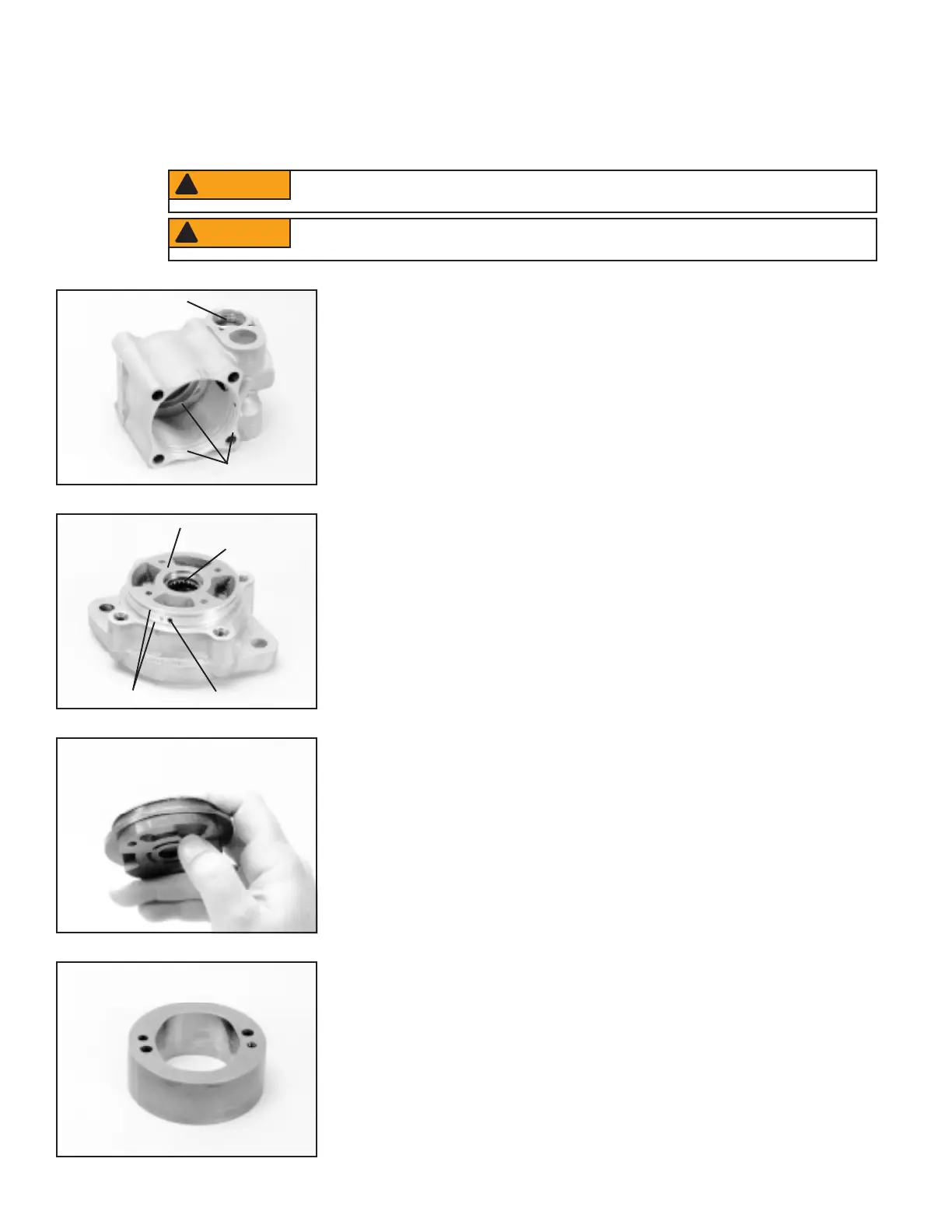Inspection
Because they are flammable, be extremely careful when using any solvents. Even a small
explosion or fire could cause injury or death.
Wear eye protection and be sure to comply with OSHA or other maximum air pressure
requirements.
Make sure all sealing surfaces and seal cavities are free from nicks and corrosion. Any nicked or
corroded surface requires part replacement to ensure proper sealing.
Wash all parts in clean, OSHA approved solvent. Air blow them dry only.
1. Inspect the housing (1) for cracks, stripped threads,
damaged valve bore and damaged sealing areas.
2. Inspect the cover (21) for nicks in o-ring seal
grooves. Make sure the seal drain hole is open, and
the seal bore is free of nicks and other damage.
Make sure the surface on which the bottom plate
rests is flat and free of nicks and other damage.
Make sure all needles roll freely in the needle
bearing (22).
Inspect housing
Inspect cover
3. Inspect the top plate (13) for seal area nicks, and
abnormal wear or erosion. A polished pattern from
the rotor and vanes is normal, grooves you can feel
with your fingernail are not normal.
4. Look for obvious damage on the inside of the cam
ring (14) like abnormal wear, erosion or surface
imperfections.
Inspect cam ring
Inspect top plate
!
WARNING
!
WARNING
Valve Bore
Sealing Areas
Seal Grooves
Seal Drain Hole
Bottom Plate Surface
Needle Bearing

